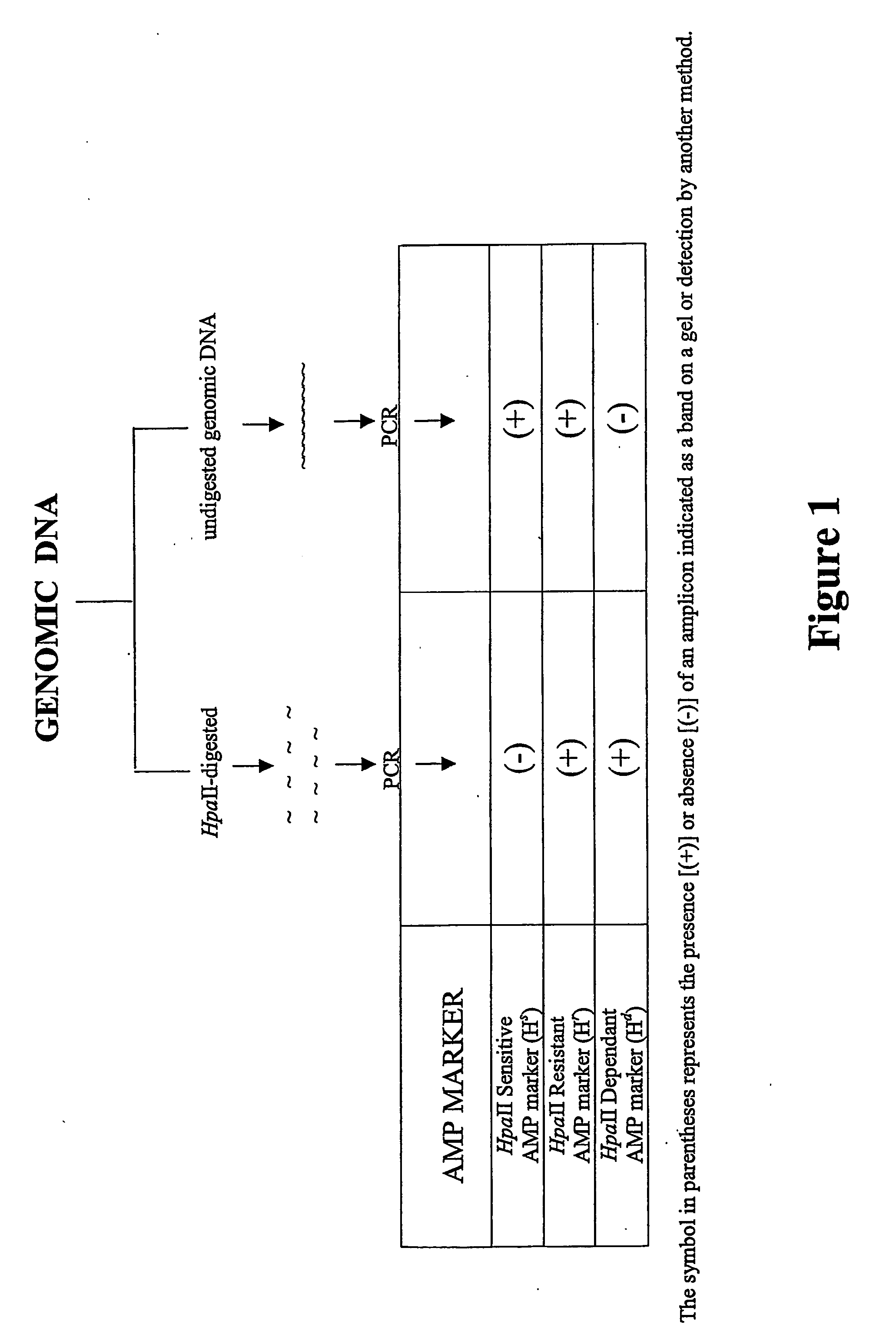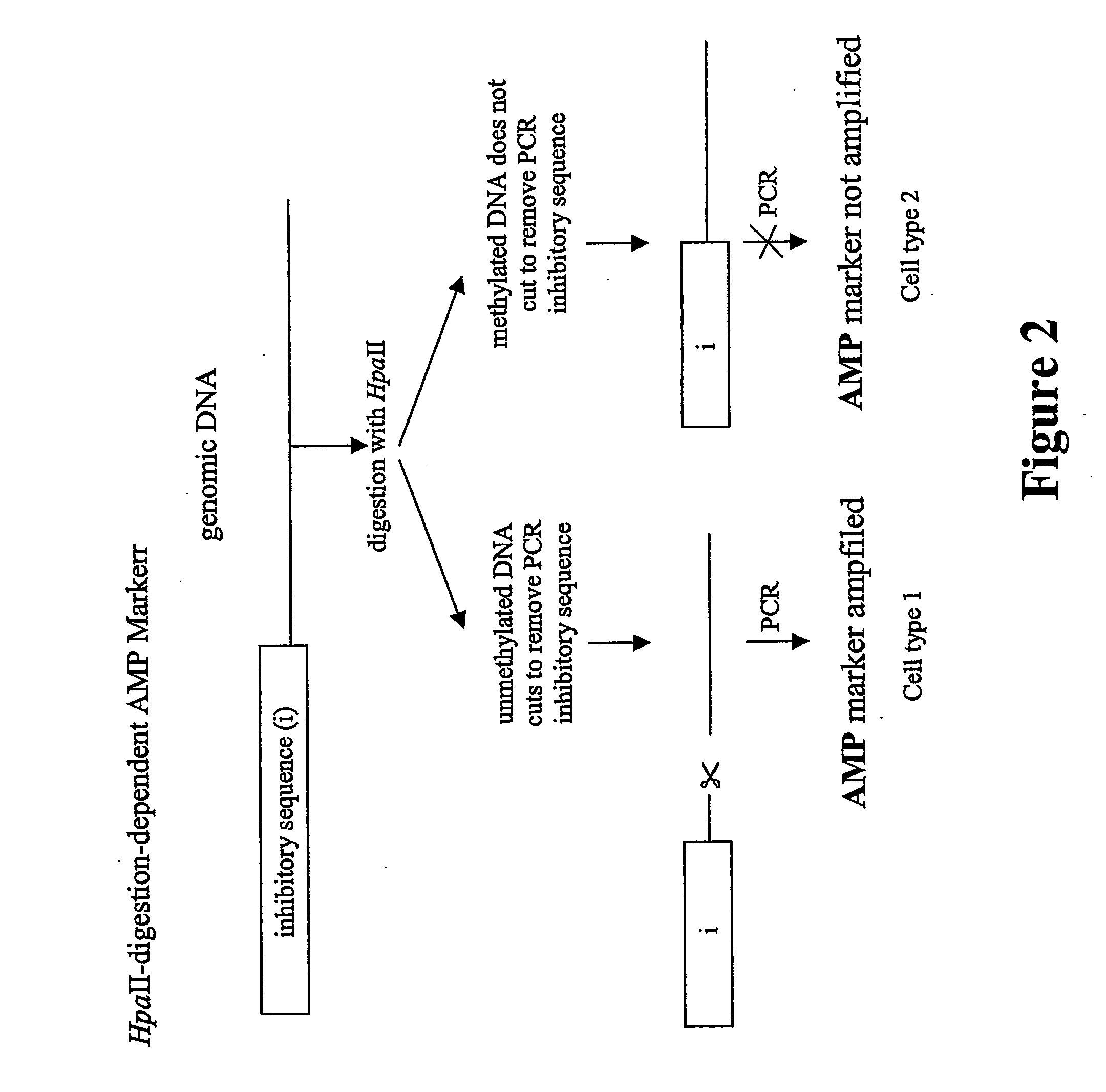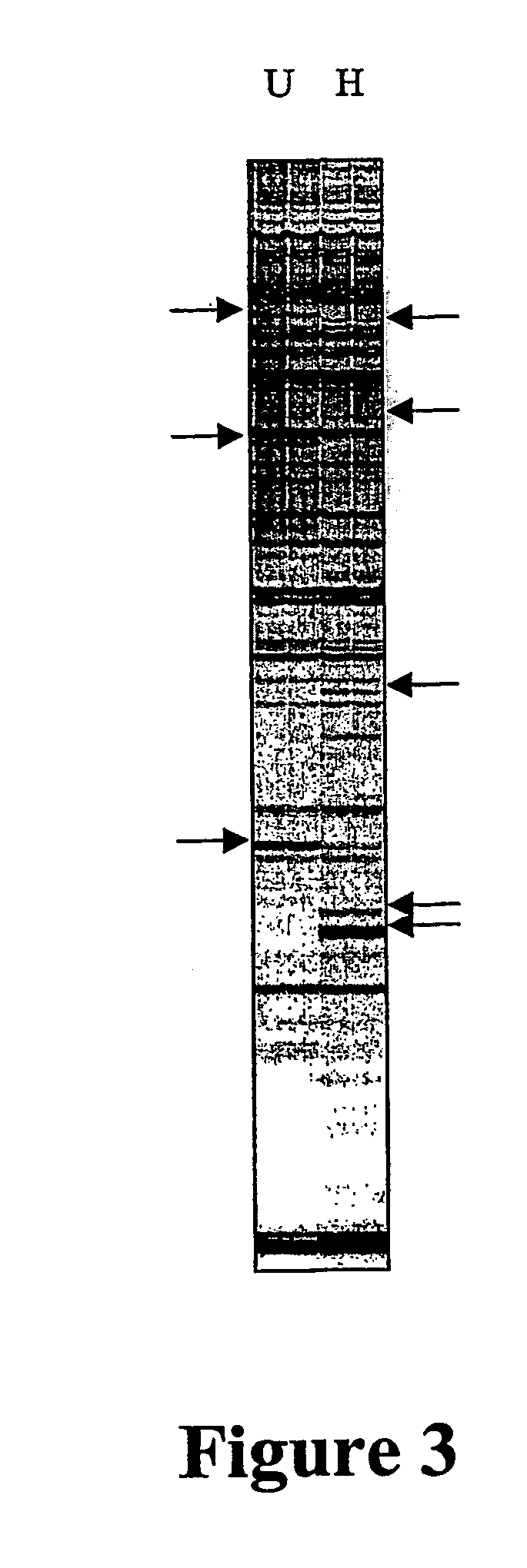Detection of dna methylation
a methylation and detection technology, applied in the field of genetic fingerprinting, can solve the problems of difficult to demonstrate unequivocally, lack of efficient procedures for large-scale assessment of dna methylation at cpg sites around the genome, etc., and achieve the effect of better profiling a victim
- Summary
- Abstract
- Description
- Claims
- Application Information
AI Technical Summary
Benefits of technology
Problems solved by technology
Method used
Image
Examples
example 1
AMP Protocol
[0129] The following protocol may need to be adapted for use in particular plant or animal cells. However, in general, the procedure involves isolating genomic DNA, subjecting the DNA to HpaII digestion and subjecting the digest to an amplification reaction using a primer which spans all or part of the HpaII recognition sequence, i.e.
↓CCGG, ↑
such that if HpaII has digested the nucleotide sequence, primer extension cannot occur.
[0130] A diagram showing the AMP protocol is shown in FIG. 1.
[0131] Three classes of product are expected:
Class IHpaII digestion-resistant (Hr) markers, indicative ofmethylationClass IIHpaII digestion-sensitive (Hs) markers, indicative of non-methylation.Class IIIHpaII digestion-dependent (Hd) markers. Amplicon ismethylated or partly methylated and is linked to anunmethylated HpaII site followed by an inhibitor sequence.Cleavage of the unmethylated site removes inhibition andallows amplification.
[0132] The existence of an Hd (Class III) ...
example 2
Detection of DNA Polymorphisms in Human Body Fluid
[0169] Using the AMP technology, abundant and distinct tissue-specific DNA methylation polymorphisms were readily detected between human blood and sperm (FIG. 4). Most of the tissue specific DNA methylation polymorphisms were Class III digestion dependent markers and surprisingly, 30% of these were polymorphic in methylation status between these tissues. Between five blood samples and three sperm samples (from eight separate individuals), 80% of variation in AMP profiles generated from HapII-digested template could be explained by the tissue type, and the remaining 20% of variation could not be distinguished from nucleotide (rather than DNA methylation) polymorphism.
[0170] In another example, blood from three sets of young, healthy, identical twins were also assessed for DNA methylation polymorphisms over 8,000 CpG sites in the genome, representing an average of about 340 CpG sites per human chromosome. There was 100% concordance o...
example 3
Identification of Class III Markers in Human Genome
[0171]FIG. 5 is a diagrammatic representation showing map location of four human digestion-dependent Class III AMP markers and the flanking HpaII sites. Each of the digestion-dependent markers that was cloned and sequenced was 100% homologous to sequenced regions of the human genome. The positions of the Class III amplicons (HdM 1-4) [SEQ ID NOS:33-36] are indicated by thick shaded boxes on the chromosomal segment. The locations of HpaII sites are represented by vertical lines and the distance to, and orientation of nearby genes are indicated. Southern analysis has shown that Class III markers represent the junction between methylated and unmethylated DNA in the genome. Tissue-specific Class III AMP markers often map to the CpG islands and often represent tissue-specific modification of methylation in or around CpG islands.
PUM
| Property | Measurement | Unit |
|---|---|---|
| emission wavelength | aaaaa | aaaaa |
| emission wavelength | aaaaa | aaaaa |
| emission wavelength | aaaaa | aaaaa |
Abstract
Description
Claims
Application Information
 Login to View More
Login to View More - R&D
- Intellectual Property
- Life Sciences
- Materials
- Tech Scout
- Unparalleled Data Quality
- Higher Quality Content
- 60% Fewer Hallucinations
Browse by: Latest US Patents, China's latest patents, Technical Efficacy Thesaurus, Application Domain, Technology Topic, Popular Technical Reports.
© 2025 PatSnap. All rights reserved.Legal|Privacy policy|Modern Slavery Act Transparency Statement|Sitemap|About US| Contact US: help@patsnap.com



